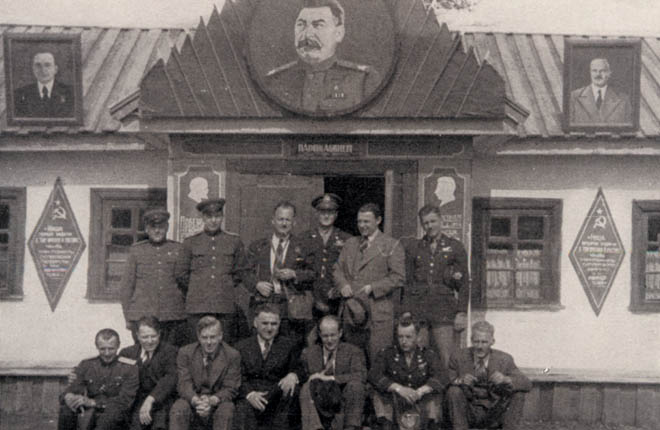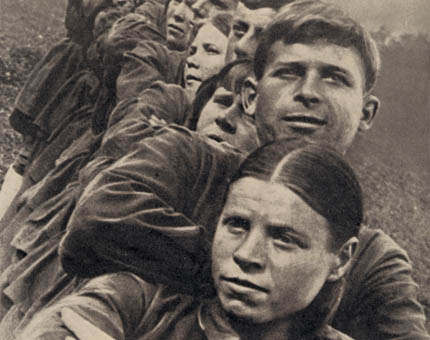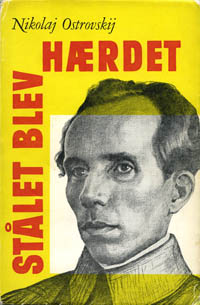|
Propaganda: A historical necessity
|
The favourite topic for Red propaganda was the underdeveloped state of Czarist Russia and the country's exploitation of the working classes. Surprisingly, Nikita Krushchev, leader of the Soviet Union after Stalin, was a striking example of the opposite. In regard to progress, 1913 was the year when economic development advanced faster then ever in the history of Russia.
As for Nikita Krushchev, he was the son of an extremely poor father who was an alcoholic. They could not even afford shoes or boots and had to make do with sandals made of birch bark. But little Nikita got a job in an engine works where his father worked. He was trained as an apprentice and became a metal worker who maintained mining machinery.
With his wages, he supported his family and was able to keep his first wife at home. He also provided support for his mother. He could take Sundays off and participated in literature meetings in a revolutionary group. He learnt to read and write and studied in his free time. He was even able to get a motorcycle which he put together from parts he had bought. Even compared with the most advanced countries in 1913, conditions like that were anything but backward! Out in the country, things were very different but even here there was considerable progress.
A country's “backwardness” is a concept which can be difficult to repudiate with any precision. “Orthodox” communists also cunningly avoided admitting that it was difficult to make up for.
Lies and claims
Propaganda was energetically applied to telling of the Soviet Union's qualities and resolve. In the love story “Cement”, a young couple lived at each end of the huge country. When they met and were lying in bed, they naturally ... talked about productivity standards!
The novel “How the steel was tempered” is a great read. It is a literary masterpiece but the content is outrageous. It was the Soviet Union's most popular novel and was published in a multitude of languages. Here you can read how the communists “conquer” the “fuel front” by finding wood to heat Kiev through the winter. The victory consisted in finding the absolute minimum of firewood for a city that had been well supplied for hundreds of years without the need for a “fuel front”.
Relevance to the Gulag
Propaganda was not directly linked to the Gulag but it is important to understand in order to appreciate the background for life in the camps, not least in connection with the propaganda brigades in the individual camp.

At the time, even Lenin did not believe Russia was ready for socialism as it was not properly industrialised. That explains why Germany, in particular, should have a revolution with the result that the brothers in well developed Germany sought to modernise the Soviet Union on its path towards socialism and communism. To cover the costs to promote these foreign revolutions, the bolsheviks sold many of Russia's art treasures – treasures which today's billionaires are in the process of buying back.
There was no worldwide revolution and Lenin decided to move to NEP which was a kind of state-controlled capitalism liable to create a market economy, the basis for the next step, socialism, which in turn was the final step towards communism. It was an evolutionary doctrine which many on the left accepted as an indisputable law of nature.

